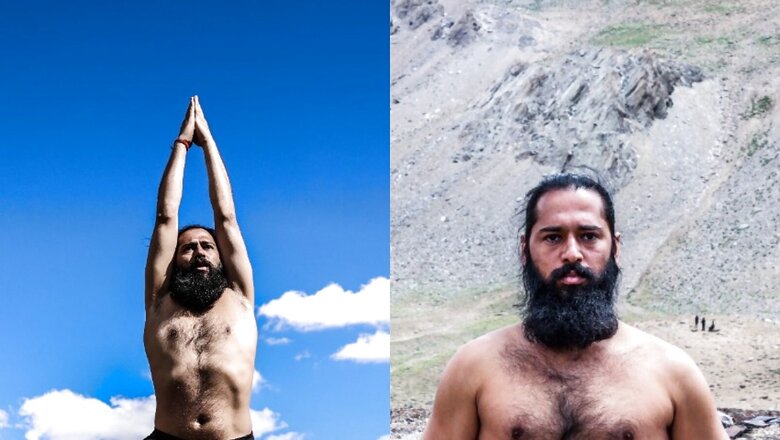
views
Similar to how maintaining physical fitness keeps our bodies strong, maintaining mental fitness enables us to achieve and maintain good mental health. We value our lives, our surroundings, and the people who live there when our minds are in good form. We have the ability to experiment, learn, discover, and take risks. We are more capable of overcoming obstacles in both our personal and professional life. We go through the grief and wrath that comes with losing a loved one, losing our jobs, having problems in our relationships, and going through other difficult times, but eventually, we are able to go on and start living again.
On the occasion of World Mental Health Day, Himalayan Siddha Akshar suggests 8 yoga asanas to help improve your mental health:
- Samasthithi/Tadasana – Mountain Pose
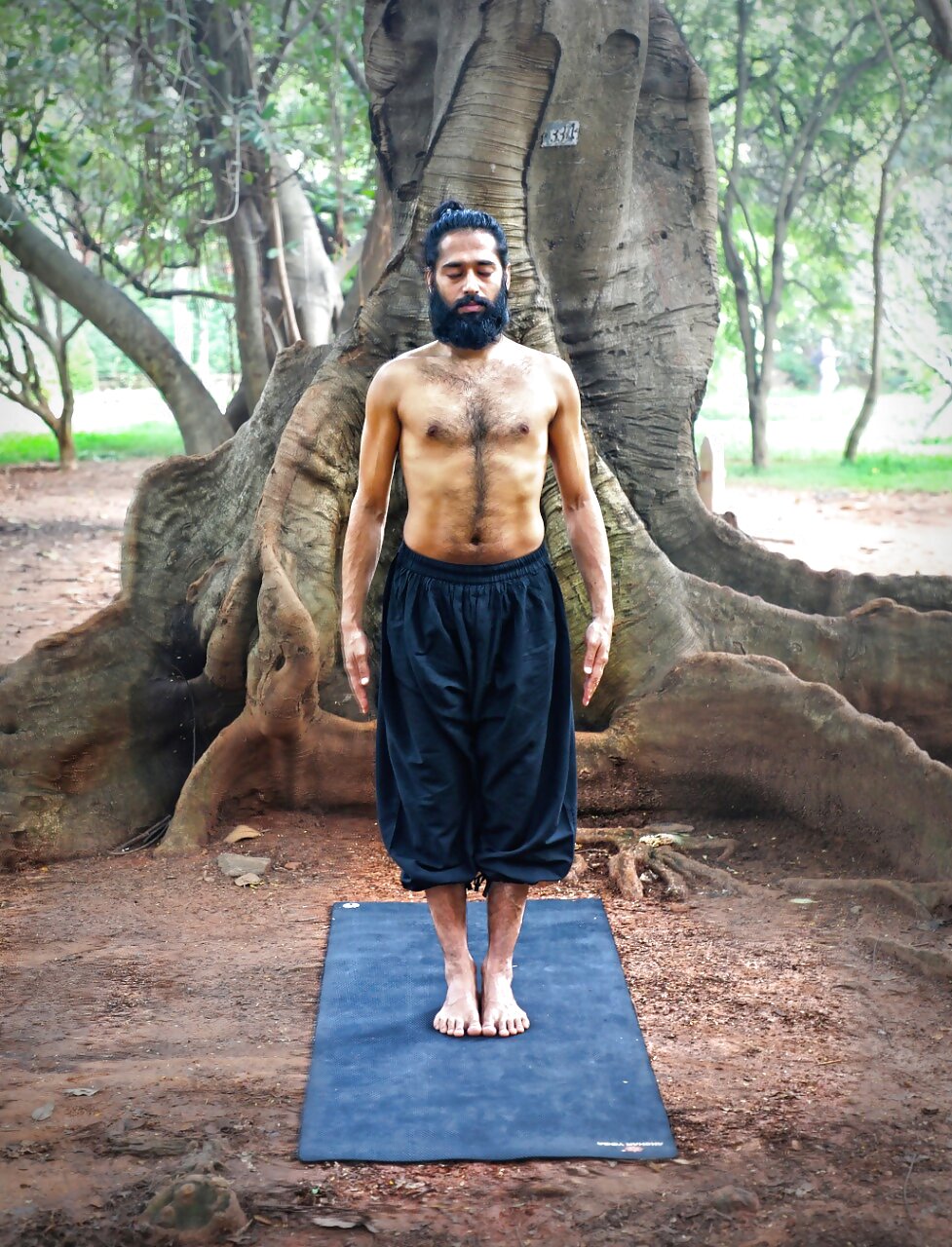
Formation of the posture: Draw in your abdominals and ease your shoulders down and back as you stand tall with your big toes touching and your heels pressed together. Take 5 to 8 deep breaths while tensing your leg muscles. Maintain a tall, powerful posture by performing this pose.
- Vrikshasana – Tree Pose
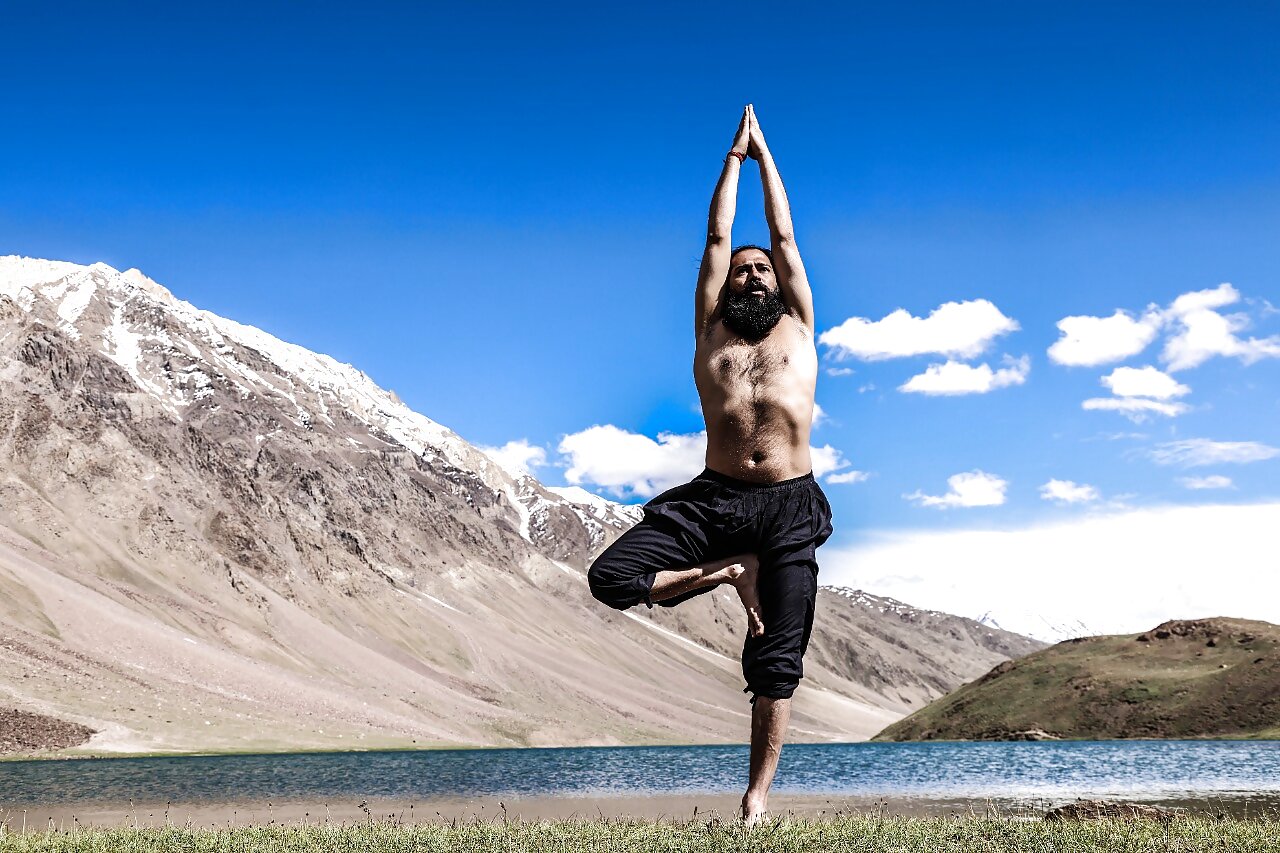
Formation of the posture: Start by standing in Samasthithi. Lift your right leg off the floor and place your weight on your left leg. Support your right foot with your palms and bring it as close to your groin as possible. Place it at your ankle or calf. Raise your hands and join the palms. Keep your head in between your arms. Repeat with the other leg.
- Padmasana – Lotus Pose
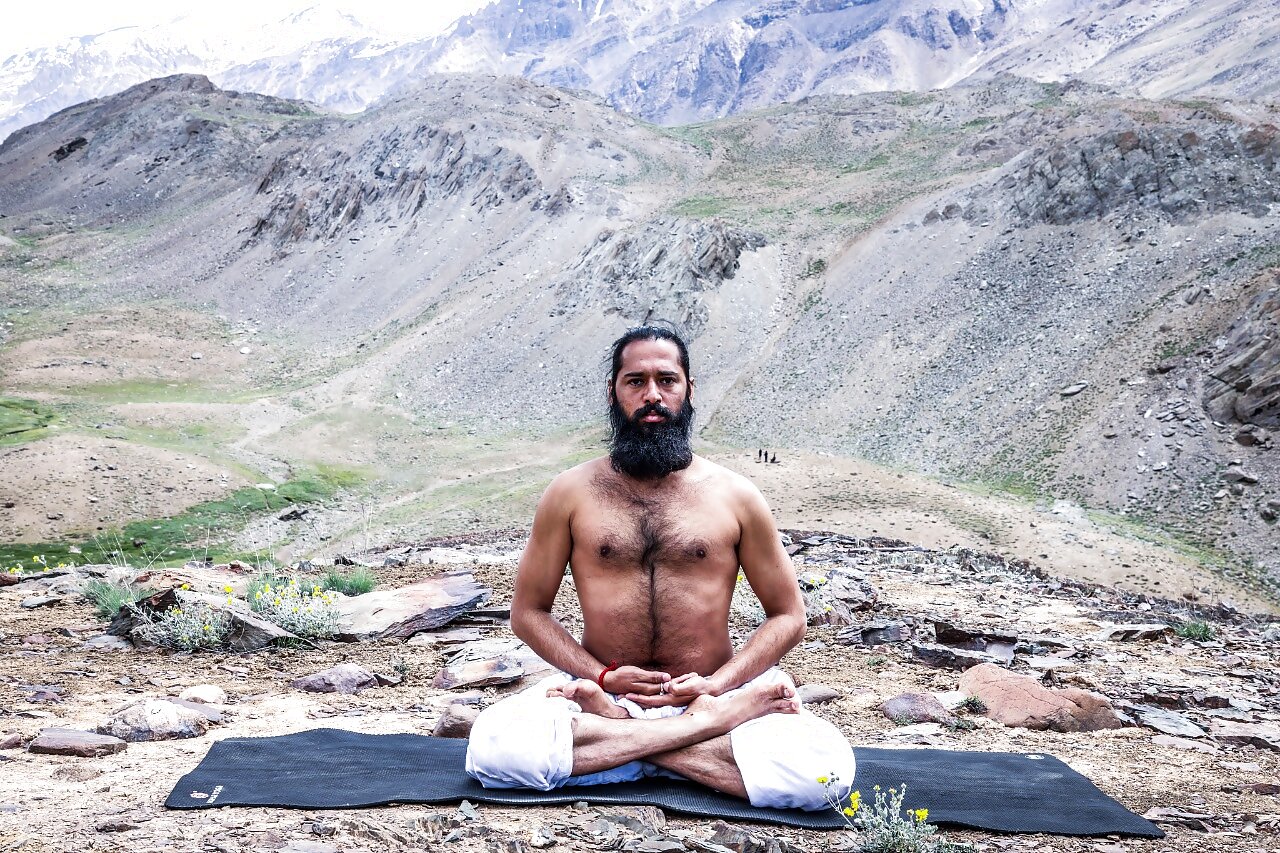
Formation of the posture: Sit in Ardha Padmasana or Half Lotus Pose with your right foot over your left thigh. Lift and place your left foot on your right thigh. Pull your feet closer to your hips. Drop your knees to the floor. Put your hands on your knees. Repeat with the opposite leg.
- Balasana – Child’s Pose

Formation of the posture Kneel on the mat and sit on your heels. Raise your arms over your head. Inhale. Bend your upper body forward. Place your forehead on the floor. Your pelvis should rest on your heels. Make sure your back is not rounded.
- Halasana -Plough Pose
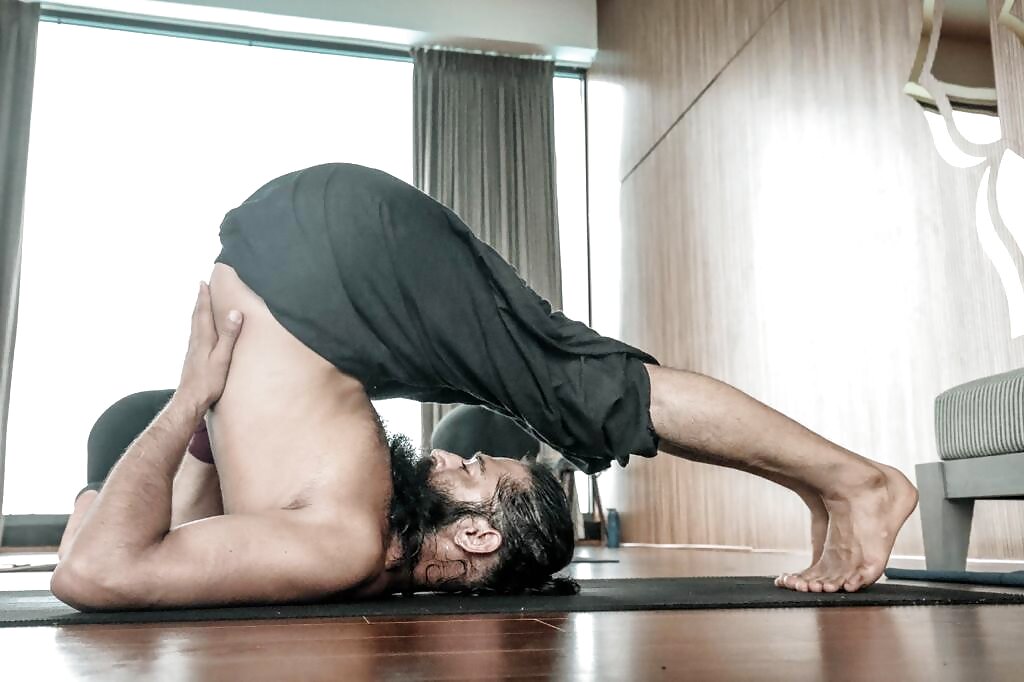
Formation of the posture: Lie on your back with your palms next to your body. Press your palms into the ground to lift your legs and place them behind your head. You can use your hands to support your back to the extent that is comfortable.
Word of Advice: This posture should not be used by people with lumbago, neck pain, spondylitis, or high blood pressure.
- Sirshasana – Headstand
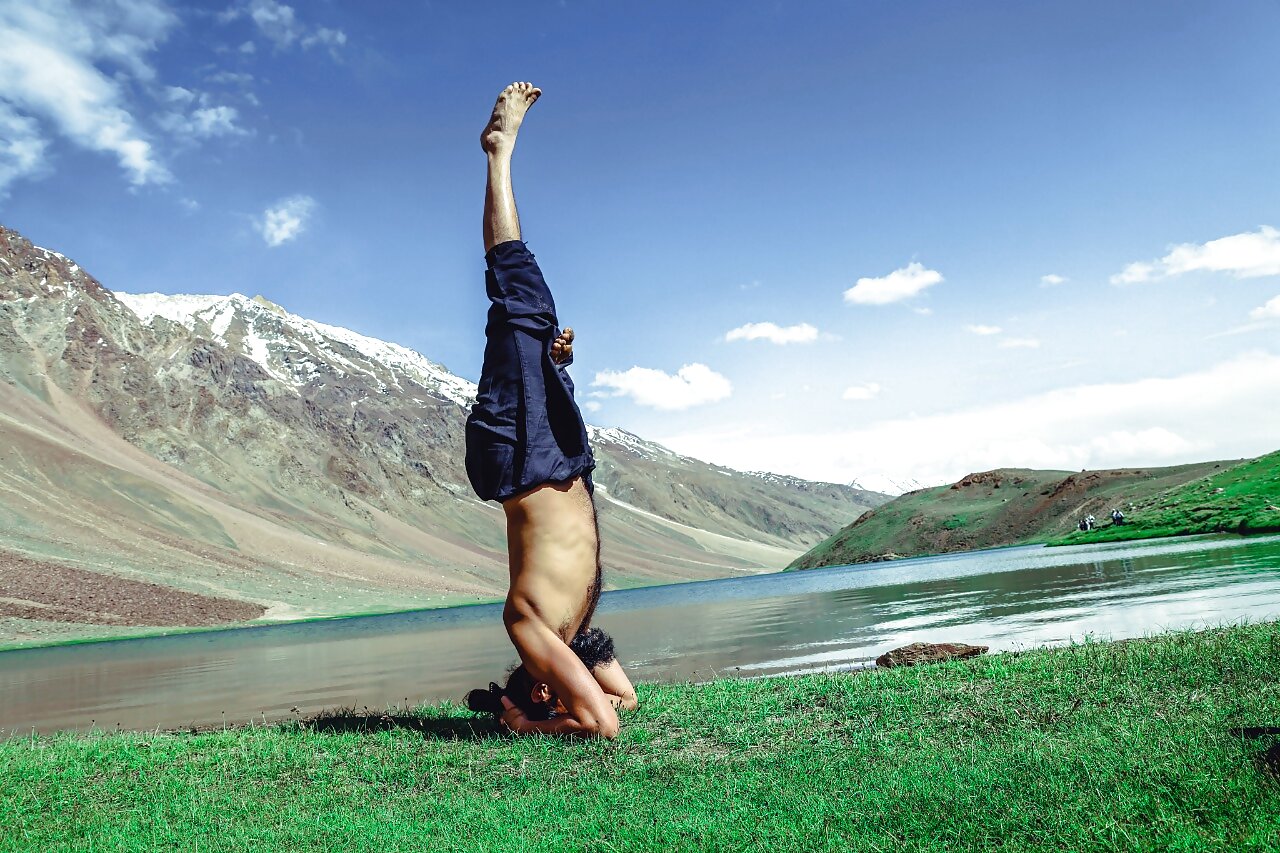
Formation of the posture: Start in Vajrasana, interlace your palms, place your elbows on the floor in a triangle, place the crown of the head in front of your palms, and let your palms support the back of your head. Walk towards your head until your back straightens. First lift any one leg and slowly lift your second leg up. Join your legs and point your toes. Hold this position for as long as you can.
Word of Advice If you have any of these conditions you should avoid the pose – lumbago, neck pain, spondylitis and high blood pressure.
- Chakrasana – Wheel pose
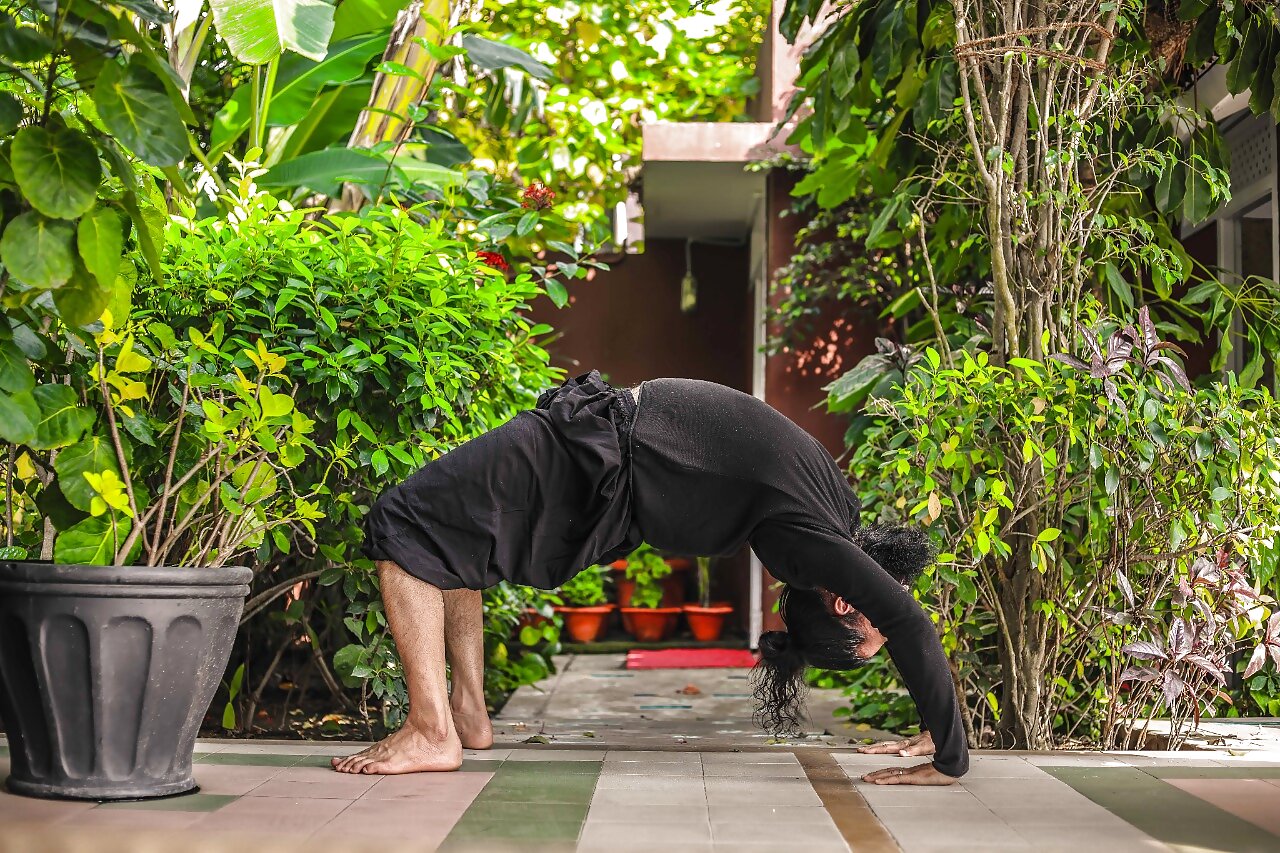
Formation of the Posture: • Lay on your back. • Place feet firmly on the ground and bend your knees. • Bend your arms at the elbows. Put your palms on the floor on either side of your head and rotate your arms at the shoulders. • Take a deep breath in, apply pressure to your legs and palms, and raise your entire body in an arch. Allow your head to softly drop behind you as you look back and relax your neck. All four of your limbs should equally bear the weight of your body. Hold the pose for 15 to 20 seconds.
- Dhanurasana – Bow Pose
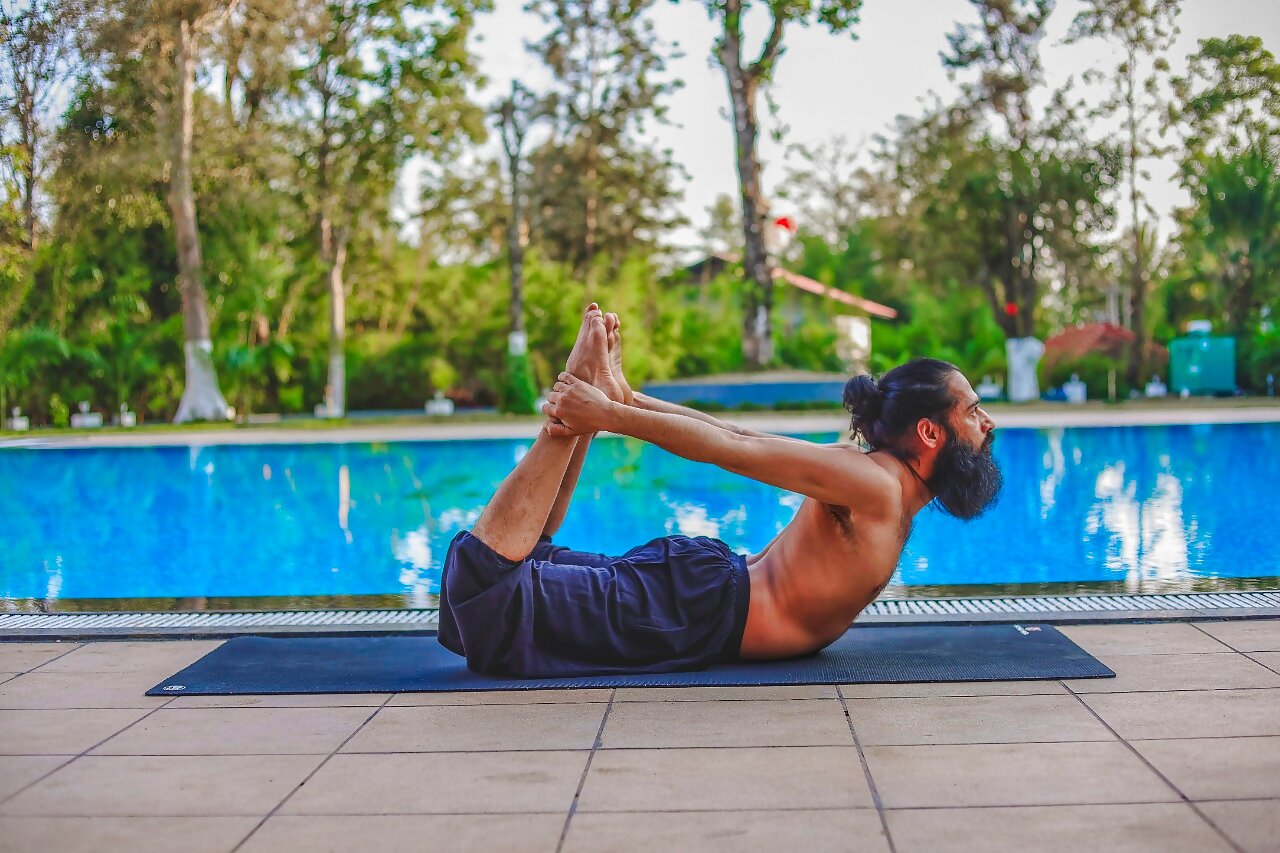
Formation of the Posture: Lie on your stomach to start, then bend your knees and hold your ankles in place with your palms. Then, lift your arms and legs as high as you can.
Increasing your awareness or being more attentive is one of the best things you can do to safeguard your mental health. So what does being mindful mean? It is paying attention to the present moment. We are frequently so preoccupied that we are never truly in the moment to enjoy it. However, when you start to practise mindfulness, it eliminates the mind’s erratic thoughts that we have grown so accustomed to.
Read all the Latest Lifestyle News and Breaking News here



















Comments
0 comment